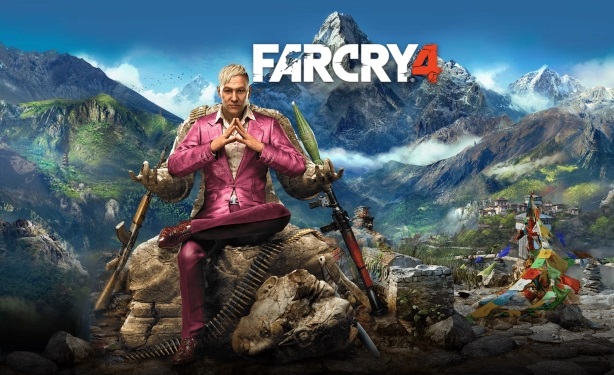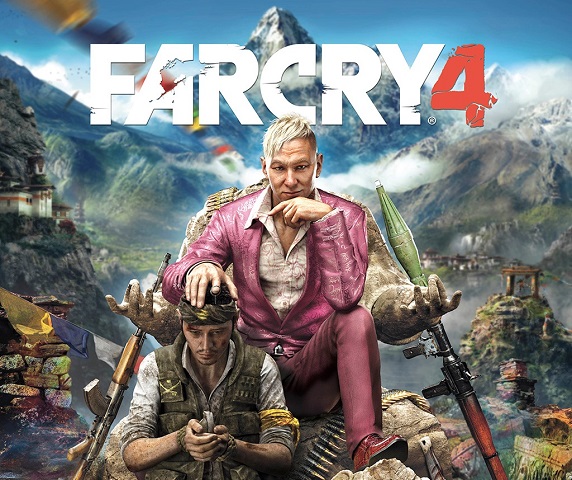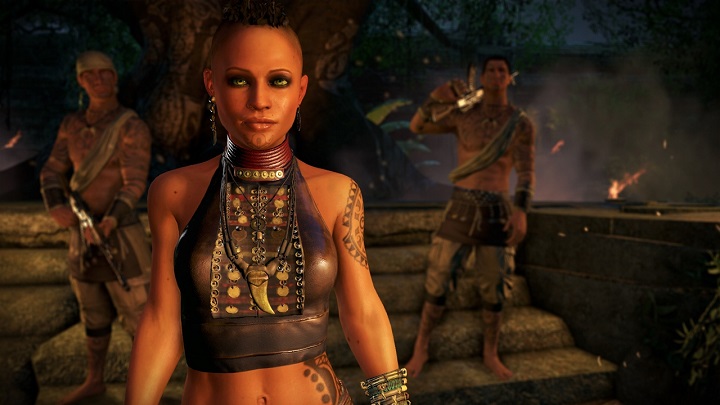When Ubisoft released a promotional image to tease gamers about Far Cry 4, it caused an uproar. But it wasn’t about the usual culprit, video game violence. You see, many people perceived this image as being racist. The offending image shows a white blond man in a pink suit with his hand on the head of a subjugated native, who is cradling a grenade. The native man has dark skin and appears to be a citizen of Kyrat, the fictional setting of Far Cry 4. Ubisoft quickly denied the “it’s racist” claims by way of creative director Alex Hutchinson, but the specter of racism in video games had raised its ugly head.
Far Cry 3, the previous game in the series, also had racist overtones. Its story has the dreaded “White saviour” complex. A rich, skinny and white American teen turns into a Rambo clone in a wildly unbelievable story arc, and liberates an island from pirates. The natives of Rook Island, known as the Rakyat, are described as “fierce warriors” and yet they are completely powerless when dealing with the pirates led by their extremely violent and lunatic leader Vaas.
But the rich pale-skinned kid from California named Jason Brody goes from practicing extreme sports to blowing up helicopters in no time. Even the leader of the natives (Citra) recognises him as the chosen one. Of course he is, not in a thousand years would the natives sort out the mess without this white messiah.
Racism rears its ugly head in games beyond the Far Cry franchise, as well. Back in 2009 Capcom released Resident Evil 5, which caused no end of controversy and not for its gory first person zombie killing action. The game is set in Africa, and the protagonist spends most of his time shooting zombies who happen to have dark skin. But game creator Jun Takeuchi dismissed that the game is racist in an interview: “I think everyone understands that we never set out to with the intention to make anything that was racist”.
Other developers have been accused of making games with racist undertones, and Rockstar is probably the most controversial developer out there. In Max Payne 3, antihero Max teams with a South American cop named Raúl Passos, and the character is mostly a racist caricature. When Max and Passos are captured by mobsters in New York, he is beaten and called a “spick”. He dances like a stereotypical Brazilian. The country of Brazil as a whole is portrayed in a way that is less than flattering. Only the most sordid side is shown, which includes favela violence, drug and organ trafficking and extremely violent shootouts. Perhaps Rockstar should be reminded that normal Brazilian people exist.
Going back to that controversial Far Cry 4 artwork, it seems stirring controversy is a popular tactic in all media, whether it be movies, music and of course video games. Making viewers feel uncomfortable and exposing them to harsh realities is a way to get their attention, and a promotional tactic for any art form. In the end, though, Ubisoft had to change the game cover image and replace it with a more politically correct one. But the controversy got people writing and talking about Far Cry 4, and in that sense, the image did its job.
Far Cry 4 (Ubisoft Montreal / Ubisoft)
Far Cry 3 (Ubisoft Montreal / Ubisoft)
Resident Evil 5 (Capcom)




